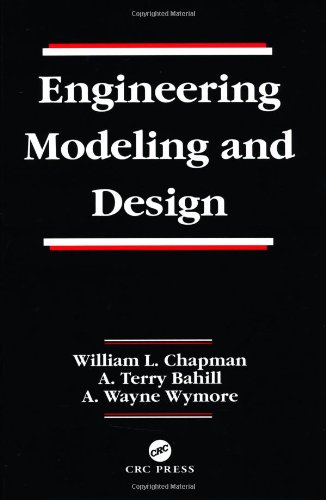Background
Bahill, A. Terry was born on January 31, 1946 in Washington, District of Columbia, United States.


(This second edition comprehensively presents important to...)
This second edition comprehensively presents important tools of linear systems theory, including differential and difference equations, Laplace and Z transforms, and more. Linear Systems Theory discusses: • Nonlinear and linear systems in the state space form and through the transfer function method • Stability, including marginal stability, asymptotical stability, global asymptotical stability, uniform stability, uniform exponential stability, and BIBO stability • Controllability • Observability • Canonical forms • System realizations and minimal realizations, including state space approach and transfer function realizations • System design • Kalman filters • Nonnegative systems • Adaptive control • Neural networks The book focuses mainly on applications in electrical engineering, but it provides examples for most branches of engineering, economics, and social sciences. What's New in the Second Edition? • Case studies drawn mainly from electrical and mechanical engineering applications, replacing many of the longer case studies • Expanded explanations of both linear and nonlinear systems as well as new problem sets at the end of each chapter • Illustrative examples in all the chapters • An introduction and analysis of new stability concepts • An expanded chapter on neural networks, analyzing advances that have occurred in that field since the first edition Although more mainstream than its predecessor, this revision maintains the rigorous mathematical approach of the first edition, providing fast, efficient development of the material. Linear Systems Theory enables its reader to develop his or her capabilities for modeling dynamic phenomena, examining their properties, and applying them to real-life situations.
http://www.amazon.com/gp/product/0849316871/?tag=2022091-20

(Metrics and Case Studies for Evaluating Engineering Desig...)
Metrics and Case Studies for Evaluating Engineering Designs considers four principal metrics for system design: . Design Difficulty - Some projects do not immediately reveal their complexity. Taking some time to assess the true intricacy of each situation at the outset allows you to plan appropriately from the beginning. Required Resources - An accurate understanding of the materials and personnel needed to fulfill your goals is another keystone of good planning. Systems Engineering Efficacy - As projects get more sophisticated, the impact of systems structure becomes more and more important for success. Developmental Environment - Both technology and organizational politics affect the progress of any project. Knowing your environment allows you to identify risks before they endanger your project. Metrics and Case Studies for Evaluating Engineering Designs applies these metrics to 30 real-life case studies. Drawn from the authors' experience in industry and teaching, each case illustrates one or more of the essentials in action. Moving from simple to complex systems, the book shows how readers can apply these theories to develop individual metrics tailored to their own organizations. This common-sense approach does not require readers to understand complicated mathematics or statistical models. The authors' straightforward style makes this book ideal reading for executives in business and government who need to evaluate complex programs without having a heavy technical background. Students in all engineering disciplines can also benefit from this practical, inventive guide.
http://www.amazon.com/gp/product/0137398719/?tag=2022091-20

(Engineering Modeling and Design is a comprehensive system...)
Engineering Modeling and Design is a comprehensive systems engineering text that focuses on systematic principles for designing systems. Concurrent engineering, which requires that from the very start of a project all players (e.g., engineering, maintenance, marketing, customers) are involved as all facets of the system life cycle are considered, is skillfully illustrated through the use of two major case studies. The text describes how a product design proceeds parallel to the process design, explains key duties of systems engineers throughout the product life cycle, and examines the process of system design in terms of life cycle requirements. Projects and problems are presented throughout the text. A homework solutions/instructor's manual is available from the publisher upon request. Engineering Modeling and Design is an excellent text for engineering design courses in industry and upper division courses on concurrent engineering or total quality management.
http://www.amazon.com/gp/product/0849380111/?tag=2022091-20

( "Keep your eye on the ball!" may be good advice--but it...)
"Keep your eye on the ball!" may be good advice--but it is impossible to do. The batter can track the ball until it is about five feet in front of the plate, but then he falls behind because the ball is moving too fast. In Keep Your Eye on the Ball, Robert G. Watts and A. Terry Bahill--engineers by vocation, baseball fans by avocation--have devised a series of experiments that put some of baseball's most cherished myths to the test. By applying physics, psychology, physiology, and other scientific principles to baseball, the authors have resolved, once and for all, some of the controversial issues that have intrigued fans for decades, including: * Do curveballs really curve? Do fastballs rise? * How do knuckleballs and spitballs work? * What exactly happens when the ball hits the bat? * Does corking the bat really help a hitter? * Are aluminum bats more dangerous than wooden bats? * Can certain physiological factors help predict success for a hitter? * Why are more home runs being hit than ever before? * Are today's players better than yesterday's? Completely revised and updated to include recent statistics, new research, and additional historical commentary, Keep Your Eye on the Ball is a highly informative and entertaining guide to the science of baseball that all fans of the game--regardless of scientific background--will enjoy.
http://www.amazon.com/gp/product/071672104X/?tag=2022091-20

( "Keep your eye on the ball!" may be good advice--but it...)
"Keep your eye on the ball!" may be good advice--but it is impossible to do. The batter can track the ball until it is about five feet in front of the plate, but then he falls behind because the ball is moving too fast. In Keep Your Eye on the Ball, Robert G. Watts and A. Terry Bahill--engineers by vocation, baseball fans by avocation--have devised a series of experiments that put some of baseball's most cherished myths to the test. By applying physics, psychology, physiology, and other scientific principles to baseball, the authors have resolved, once and for all, some of the controversial issues that have intrigued fans for decades, including: * Do curveballs really curve? Do fastballs rise? * How do knuckleballs and spitballs work? * What exactly happens when the ball hits the bat? * Does corking the bat really help a hitter? * Are aluminum bats more dangerous than wooden bats? * Can certain physiological factors help predict success for a hitter? * Why are more home runs being hit than ever before? * Are today's players better than yesterday's? Completely revised and updated to include recent statistics, new research, and additional historical commentary, Keep Your Eye on the Ball is a highly informative and entertaining guide to the science of baseball that all fans of the game--regardless of scientific background--will enjoy.
http://www.amazon.com/gp/product/0716722488/?tag=2022091-20
Bahill, A. Terry was born on January 31, 1946 in Washington, District of Columbia, United States.
Bachelor of Science in Electrical Engineering, University Arizona, 1967. Master of Science in Electrical Engineering, San Jose State University, 1970. Doctor of Philosophy, University California, Berkeley, 1975.
Assistant, then associate professor biomedical engineer Carnegie Mellon University, Pittsburgh, 1976-1984. Assistant professor, then associate professor neurology Medical School University Pittsburgh, 1977-1984. Professor system engineer University Arizona, Tucson, since 1984.
President Bahill Intelligent Computer Systems, since 1986.
(This second edition comprehensively presents important to...)
(Engineering Modeling and Design is a comprehensive system...)
(Metrics and Case Studies for Evaluating Engineering Desig...)
( "Keep your eye on the ball!" may be good advice--but it...)
( "Keep your eye on the ball!" may be good advice--but it...)
(Some shelf and edge wea. Pages are clean and binding is t...)
Lieutenant United States Navy, 1967-1971. Fellow: Institute of Electrical and Electronics Engineers (vice president 1980-1987), International Council Systems Engineering (chair Incose fellows committee).
M. Karen Bahill, July 31, 1971. Children: Alex, Zach.
